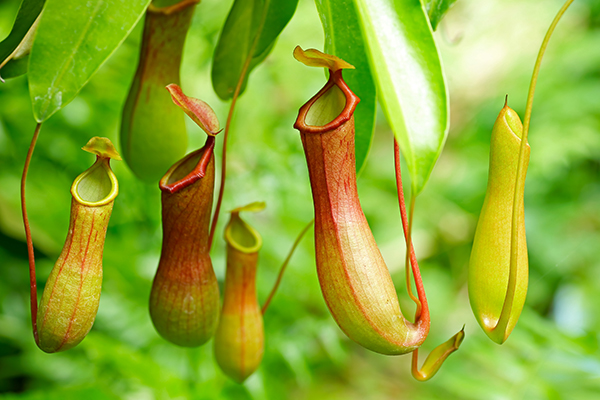Report: Two-fifths of all plant species face extinction
10/06/2020 / By Divina Ramirez

Plants and fungi are crucial to sustaining life, providing food, medicine and biofuel. But around 40 percent or two-fifths of all plant species worldwide, including those first identified in 2019, could be facing extinction, according to a recent report from London’s Kew Gardens.
The latest assessment, State of the World’s Plants and Fungi, draws upon the expertise of 210 scientists in 97 institutions across 42 countries. It represents an international effort to name new and promising flora species. The report included 1,942 new species of plants and 1,886 new species of fungi.
However, scientists could be racing against time in finding and rescuing species. The report showed that some 140,000 or 39.4 percent of all vascular plants are threatened with extinction. This figure is much higher than the earlier projection of 21 percent from Kew Gardens’ first assessment in 2016.
Plants are disappearing faster than scientists can find and name them
While new plant species are being named and described, others are moving towards extinction. This means that species that might be valuable as food, medicine and fibers are disappearing even before scientists have had a chance to explore their characteristics.
Therefore, it’s important to catalog the conservation status of each species, said co-author Eimear Nic Lughadha from Kew’s Conservation Science Department.
The report also shed light on the possible culprits driving the rapid disappearance of plants and fungi. For instance, the scientists found that out of the 5,411 medicinal plants that have been assessed for their conservation status, 723 or 13 percent are tagged as threatened due to over-harvesting.
These include Brugmansia sanguinea, or the red angel’s trumpet, a species of flowering shrub harvested to treat aches and pains. The International Union for Conservation of Nature (IUCN) has tagged this plant as extinct in the wild.
Other medicinal plants facing extinction include Nepenthes khasiana, an Indian pitcher plant used for treating gastrointestinal discomfort, and Warburgia salutaris, a tree species harvested for treating coughs and colds.
Meanwhile, six species of medicinal fungi are categorized as threatened as well. This includes Fomitopsis officinalis, a rare wood-inhabiting mushroom known for its antimicrobial properties.
On the other hand, the state of edible plants is not looking good either. For one, although there are more than 7,000 edible plants that hold potential as future crops, just 15 of those provide 90 percent of humanity’s food energy intake. Four billion people also depend on just rice, maize and wheat.
Given a growing world population, an over-dependence on a handful of crop plants could result in hunger and higher rates of malnutrition.
In effect, this over-dependence on a few crop plants highlights the importance of using diverse species of crop plants to ensure a resilient and sustainable agricultural future, said Remi Nono Womdim from the Food and Agriculture Organization (FAO), who contributed to the report.
“The thousands of under-utilized and neglected plant species are the lifeline to millions of people on Earth,” added co-author Stefano Padulosi, a senior scientist at Italy’s Bioversity International.
For example, a drought-tolerant species of pandan, which grows in coastal lowlands from Hawaii to the Philippines, produces a fruit that can be eaten raw or cooked. This species holds great potential as a sustainable food source well-suited to the tropical climate of both countries.
Meanwhile, of the more than 2,500 plants that show potential as biofuel, just six crop plants – maize, sugarcane, soybean, palm oil, rapeseed and wheat – generate 80 percent of global industrial biofuel. (Related: Researchers find a plant that can be used to feed a microalgae strain to boost its potential as a biofuel.)
Ensuring a sustainable future for all
Over the past few decades, scientists have collected and preserved vast numbers of plants and fungi. For instance, the collections at Kew Gardens and Wakehurst Place, its satellite garden, include 148,000 plants, with some dating as far back as the 1800s and earlier.
But given the rate at which plants and fungi worldwide are disappearing, scientists are hard-pressed to continue rescuing and cataloging species. World leaders need to implement strategies to save these species, the authors noted. Scientists also need more funding and better technologies for plant conservation.
Moreover, in order to be effective, conservation programs need to engage local people, who the authors described as being the real custodians of flora and fauna species.
Read more articles about plant conservation at Environ.news.
Sources include:
Tagged Under: biodiversity, conservation, Endangered species, environment, extinction, Fungi, Plants, trees
RECENT NEWS & ARTICLES
COPYRIGHT © 2017 COLLAPSE.NEWS
All content posted on this site is protected under Free Speech. Collapse.news is not responsible for content written by contributing authors. The information on this site is provided for educational and entertainment purposes only. It is not intended as a substitute for professional advice of any kind. Collapse.news assumes no responsibility for the use or misuse of this material. All trademarks, registered trademarks and service marks mentioned on this site are the property of their respective owners.




















